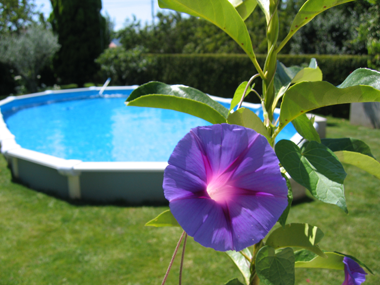
Soon spring will be here and it will be time to undergo the task
of opening your above ground swimming pool. Planning will make your
job a whole lot easier. There is nothing worse than realizing
you're short one bag of shock when you are in the middle of
prepping the pool. So first, you need to make a list of chemicals
that are needed.
The needs will vary depending upon the type of pool you own.
Therefore, this article will talk about it in general. You should
always refer to your pool and pump instructions for additional
information. Things you will likely need are liquid or powder
shock, bromine, chlorine powder or tablets, sanitizing cartridge
for the cartridge filters, pH increase or decrease and a test kit
to test the chemical levels.
Do not take off just yet and run to the local pool supply store for
chemicals. Stop and take a few minutes to check out all of your
hoses, skimmer baskets, clamps, gaskets and o-rings. If any of the
parts look like they might need replaced, take them with you to the
pool supply store. It is a lot easier to match
replacement parts if you have the old part with you.
Now that you have the easy part finished, it is time to begin the
fun. The first thing required taking the cover off. You will want
to enlist help for this, because you want to avoid getting any top
water into the pool water. In an above ground pool, you should
siphon the water off with a hose.
To get a good siphon started, hook up the hose to the spigot and
put the other end of the hose into the top water. Turn the hose on
for a minute to fill it. Next crimp the hose a foot or two away
from the faucet, and with your other hand, disconnect the hose from
the spigot. Position the hose at a downspout drain to discharge
then let go of the crimp. The water will reverse and start to
drain.
Once you have the water cleared, use a leaf rake to remove as
many leaves and twigs as possible. Next, remove your cover weights
or springs. At this time a few people positioned around the pool
will help to keep the cover out of the water. Try to fold your
cover like a blanket keeping the crud in the middle then remove the
cover. You need to scrub the cover thoroughly so it is dry for
summer storage.
Now it is time to attach all the pump hoses. Remember to lube
plugs, fittings, valves, and o-rings with petroleum jelly. Also, be
sure to remove any freeze plugs that were used to cover the hose
openings. You will most likely need to add water to the pool. It
needs to be filled to the skimmer halfway point.
At this point you should start re-circulating the water and check
for any leaks around the pump and hoses. Once your pool is leak and
drip free, skim off as much floating debris as you can with your
skimmer net. Open all your valves to flood the hoses and prime the
pool pump. Most manufacturers recommend constant recirculation of
the pool water for at least three days. Any crud and debris on the
sides and bottom of the pool will need to be scrubbed off. Use the
broom attachment of your pool vacuum for this.
After all debris has been removed and the pool has been scrubbed,
check your filter for cleaning. Some pumps have removable filters;
others are back-flushed, so clean as directed. Once the filter is
cleaned, you can now super shock the water as per your
manufacturer's instructions. If you start with green water, you
will need a lot more shock. It may take a few days of recirculation
to clear the water. Once the water has cleared, test your water or
take a sample to your pool supply store and have it analyzed.
Adjust the water as required and keep the recirculation going. All
that is now left to do now is to wait for the water to warm up so
you can start enjoying your pool.
About the
author:
Ethan K. Roberts writes on a variety of topics not limited
to above ground pools. Also available are more
articles about inground pool liner and above ground pool decks.
Article Source: http://www.ArticleGeek.com - Free Website Content